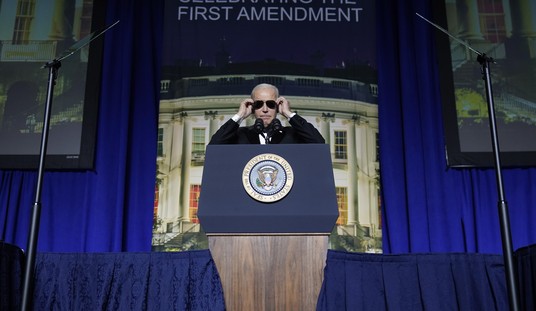President Obama’s stimulus plan, we were told, was designed to jolt the economy, “save” or “create” jobs and garner bipartisan support. The bill which passed the House Wednesday by a 244-188 margin (attracting not a single Republican vote and losing eleven Democrats) does none of these things. Although the bill now goes to the Senate, the House vote is in a sense a stunning rebuke. As Minority Leader John Boehner said in a released statement: “This was a bipartisan rejection of a partisan bill.”
So what happened?
The stimulus bill which passed is the handiwork of Democratic House Speaker Nancy Pelosi. She certainly did not constrain herself to the concept of a “stimulus” plan. The Wall Street Journal explained:
We’ve looked it over, and even we can’t quite believe it. There’s $1 billion for Amtrak, the federal railroad that hasn’t turned a profit in 40 years; $2 billion for child-care subsidies; $50 million for that great engine of job creation, the National Endowment for the Arts; $400 million for global-warming research and another $2.4 billion for carbon-capture demonstration projects. There’s even $650 million on top of the billions already doled out to pay for digital TV conversion coupons.
In selling the plan, President Obama has said this bill will make “dramatic investments to revive our flagging economy.” Well, you be the judge. Some $30 billion, or less than 5% of the spending in the bill, is for fixing bridges or other highway projects. There’s another $40 billion for broadband and electric grid development, airports and clean water projects that are arguably worthwhile priorities.
Add the roughly $20 billion for business tax cuts, and by our estimate only $90 billion out of $825 billion, or about 12 cents of every $1, is for something that can plausibly be considered a growth stimulus. And even many of these projects aren’t likely to help the economy immediately. As Peter Orszag, the president’s new budget director, told Congress a year ago, “even those [public works] that are ‘on the shelf’ generally cannot be undertaken quickly enough to provide timely stimulus to the economy.
The Democrats were shamed into removing a couple of the more egregious items — hundreds of millions to reseed the National Mall lawn and to pay for contraceptives. But the contours of the bill remained essentially the same and largely untouched by Republican hands.
And not only Republicans complained that the bill’s failure to focus on short term “stimulus” spending (including so-called “shovel ready” infrastructure projects). MSM outlets observed that this was a bill with plenty of superfluous, non-stimulative spending. And the Congressional Budget Office explained that much of the money won’t be spent for eighteen months and that less than 10% of the money will be spent on those infrastructure projects. Independent economists and business leaders expressed doubts that the stimulus package would do much to alleviate unemployment or spur growth. Even economists such as Martin Feldstein who supported the concept of a stimulus bill declared that this one needed to be “thoroughly revised” to meet its stated goals.
As Jim Manzi explained:
So, if this is a “normal” length recession, the spending bill will have the classic problem that fiscal stimulus does — namely, it comes too late to do much good, but right on time to help stoke inflation and mis-allocation of resources that are suddenly in high demand as the economy enters a recovery. And if this is a very long-lasting recession, more like a U.S. 1930s Depression or Japan 1990s “lost decade”, then the problem is so long-lasting that we’re not really debating a stimulus bill, we’re debating a near-permanent shift of control of resources to the government, which doesn’t exactly have a sterling track record of success. Only if this is a “Goldilocks-length” recession of more than 1-2 years, but less than a decade (which is a pretty hard beast to find in modern American history) would this temporal spending pattern turn out to be wise.
Republicans desire for significant tax rate cuts and for defense spending in lieu of some of the domestic grab-bag of traditional liberal spending items went unheeded. By the weekend Republicans and conservative commentators were out in full force warning that the bill in its current form was unacceptable. And while President Obama paid a courtesy visit to the Hill, he did not address their fundamental concerns. By the end of the process, with virtually every fiscal conservative organization opposing the bill, Republicans lacked any reason to vote for it. So they didn’t — not a single one.
In short, the Pelosi bill amounts to “a wish list for the left wing of the Democratic Party,” as Manzi explained. He listed the items costing $10B or more:
$20.0 billion to increase the maximum benefit under the Supplemental Nutrition Assurance Program (i.e., Food Stamps)
$18.5 billion for energy efficiency and renewable energy programs
$20.4 billion for programs administered by the Department of health and Human Services
$20.0 billion to renovate elementary and secondary schools
$17.6 billion for Pell grants and other student financial assistance at post-secondary institutions
$29.1 billion for other elementary and secondary educational programs
$30.0 billion for highway construction
$13.1 billion for other transportation programs
$11.2 billion for housing assistance programs administered by HUD
$19.5 billion (minimum, could be higher, as per Title XIII) for education grants to states
$27.1 billion for increase unemployment benefits
$13.3 billion to increase health insurance for unemployed workers
$11.1 billion for “Other Unemployment Compensation”
$20.2 billion for Medicaid and Medicare incentive payments to encourage providers to improve healthcare IT.
And all that “shovel ready” infrastructure did not really materialize. Larry Kudlow explains:
And the infrastructure bailout turns out to be vastly smaller than originally advertised. In the 1950s, Ike launched a $550 billion highway-building plan. Today’s stimulus package has $30 billion in highway-related projects, and perhaps another $40 billion way down the road for broadband and electric-grid-type developments.The public expected an infrastructure build-out that actually made some sense. That’s not what they’re getting.
The question remains why the new president, who had promised a truly bipartisan bill and warned about throwing money imprudently around, would have supported this approach. One theory is that he was run over by the Democratic steam train in the House and lacked the will or skill to pull Pelosi back. Another is that his high-minded rhetoric (seeking a more surgical approach to combating the recession and bipartisan support) was simply that — rhetoric.
Whatever the genesis of the bill, neither the contents or the final vote count was what many had anticipated just a week after President Obama swept into Washington. Its failure to attract any Republican support and the President’s refusal to incorporate (let alone take seriously) Republican policy ideas ends, for all intents and purposes, the bipartisan honeymoon. Republicans have found their voice and intend to stand on principle when the legislation offered is as lacking in merit as the stimulus bill.
In this case, the Republicans were in no mood to offer “cover” to the Democrats for a bad bill. They are not about to spare the Democrats from the responsibility for a bill which will expand the deficit (the total cost already surpasses $1 trillion with interest included) without substantially improving the short term economic outlook.
The bill now moves on to the Senate. President Obama had hoped to win eighty votes as a sign of his bipartisan support. That seems highly unlikely absent a complete reworking of the bill. As one advisor to a Senate Republican put it: “Obama is going to have to realize that tough choices come with governing, and right now his choice is to dispense with the bipartisan veneer he wants on this bill or start flexing muscles on Democrat leaders.”
The betting is that at the end of the legislative process we will have a bill that is not very stimulative nor bipartisan. But it will be extremely expensive. That, it seems, is what comes from “New Politics,” which come to think of it, isn’t new at all.








Join the conversation as a VIP Member